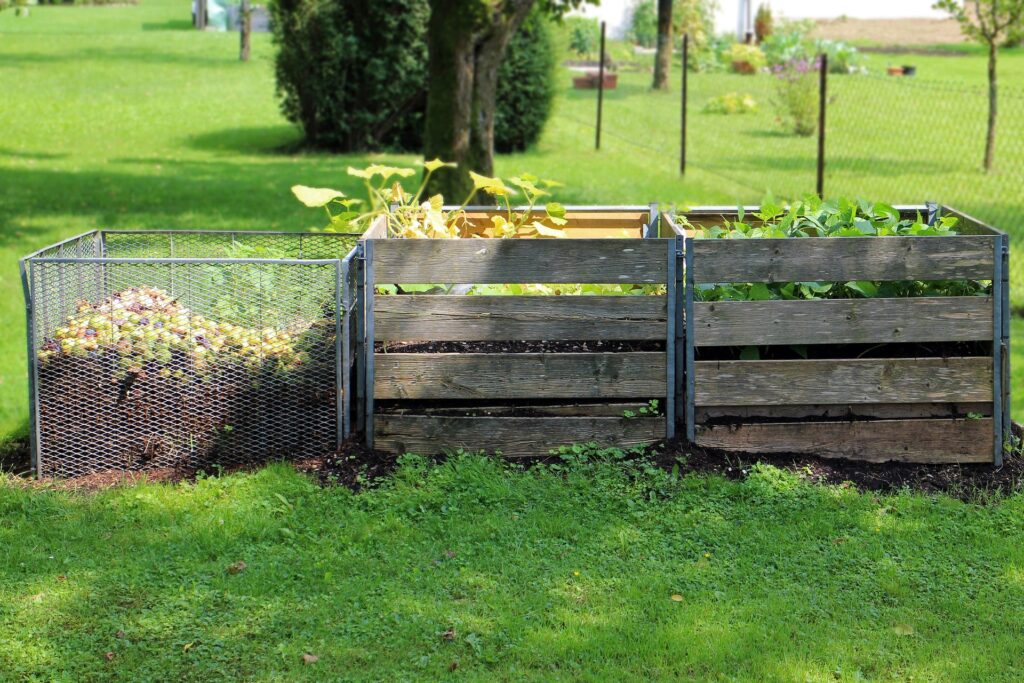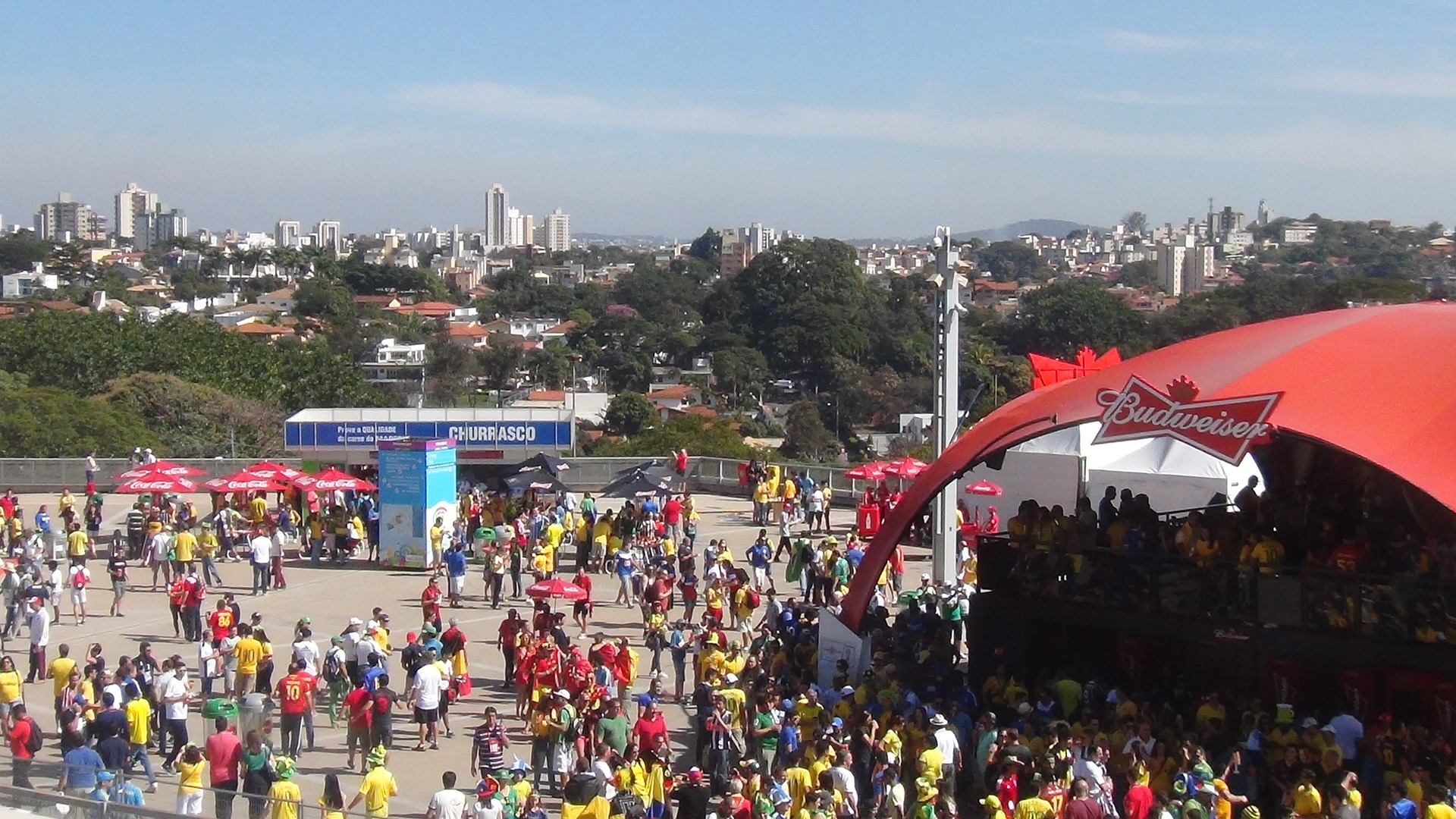Composting Outdoor Gatherings: Introduction
In a world where outdoor celebrations are a gateway to joy and connection, there’s an opportunity to embrace a new kind of festivity—one that not only resonates with the present but also invests in a sustainable future. Welcome to the realm of composting outdoor gatherings, where the scent of freshly cooked food mingles harmoniously with the earthy promise of renewal.
Here, the discarded remnants of our enjoyment transform into a gift to the planet, nourishing it for generations to come. In this article, we embark on a journey that marries the thrill of outdoor revelry with the responsibility of environmental stewardship. We’ll delve into the art of composting, exploring not just its process, but its soul: the essence of turning outdoor merriment into a legacy of eco-consciousness.
Composting Outdoor Gatherings: Why Composting Matters
Picture this: a serene park after a lively picnic, littered with disposable plates, plastic cutlery, and food remnants. Outdoor gatherings often leave behind an environmental mess that takes years to decompose. However, by embracing the concept of composting, we can change this narrative.
Composting isn’t just about waste management; it’s about nourishing the Earth. When organic materials like food scraps, napkins, and biodegradable utensils are composted, they break down naturally, enriching the soil and supporting plant growth. This simple act transforms outdoor events from sources of pollution to catalysts for positive change.
Environmental Impact of Waste Generated at Events
When we gather to celebrate under open skies, our merriment often leaves behind a not-so-joyous trail of waste. The aftermath of outdoor gatherings, filled with single-use plastics and disposable items, exacerbates environmental issues. However, by embracing composting outdoor gatherings, we convert this waste into a regenerative force, lessening the toll on our planet.
Benefits of Composting Over Traditional Waste Disposal Methods
Traditional waste disposal methods merely shift the burden of waste from our view, often to landfills where it lingers for generations. Composting, on the other hand, transforms waste into a resource. It lessens methane emissions from decomposing organics, enriches soil, and reduces the need for chemical fertilizers. Composting at outdoor gatherings is a beacon of sustainability in a world thirsty for change.
Role of Attendees in Contributing to Sustainability
Every guest at an outdoor event becomes a steward of sustainability. Through small acts—separating food scraps, placing items in the right bins, choosing compostable products—attendees weave a tapestry of positive change. Composting outdoor gatherings isn’t just an organizer’s initiative; it’s a collective effort where every individual holds the power to nurture the planet.

Composting Outdoor Gatherings: Preparation for Composting
As you plan your next outdoor gathering, consider making composting a cornerstone of your event. The preparation starts with selecting the right composting bins and containers. Opt for durable, labeled bins that guide attendees in separating waste effortlessly. Educate your guests about the composting process and its environmental benefits. Partnering with local composting facilities can streamline the process and ensure that the compostable waste reaches its destination without a hitch.
Choose Appropriate Composting Bins and Containers
The choice of composting bins and containers sets the stage for a seamless composting experience at outdoor gatherings. Opt for durable, labeled bins that guide attendees in segregating waste effortlessly. These receptacles become silent educators, speaking volumes about your commitment to sustainable event practices through composting.
Educate Attendees About Composting and Its Benefits
Transforming a gathering into a composting-friendly event requires more than bins—it demands awareness. Educate attendees about the beauty of composting, from turning food scraps into rich soil to reducing landfill waste. By sharing the ecological impact, you empower them to become active participants in composting outdoor gatherings.
Collaborate with Local Composting Facilities if Needed
While the scope of an event is finite, its impact can be magnified through collaboration. Partnering with local composting facilities ensures that compostable waste continues its journey beyond the event. This collaboration bridges the gap between the event’s sustainability goals and the ongoing mission of transforming waste into valuable compost.
Composting Outdoor Gatherings: Segregating Waste
The heart of successful composting lies in effective waste segregation. Empower your guests with knowledge about what can and cannot be composted. Organic materials like fruit and vegetable scraps, eggshells, and paper products are prime candidates for composting. On the flip side, plastics, metals, and non-biodegradable materials have no place in the composting bin. Creating clear signage and providing easy-to-follow instructions will help attendees make the right choices.
The Importance of Waste Segregation at Events
Waste segregation isn’t just a technicality; it’s a bridge to a greener future. At composting outdoor gatherings, proper separation ensures that organic materials, rich in potential, aren’t buried in landfills. It’s a step towards minimizing our ecological footprint and nurturing the environment we celebrate in.
Provide Clear Instructions on How to Separate Compostable Items from Non-Compostable Ones
Guiding participants through waste separation turns the act into an opportunity for eco-conscious choices. Simplify the process by clearly outlining what belongs in the composting bin—food scraps, napkins, and compostable utensils. This clarity empowers attendees to be partners in successful composting.
Types of Materials Suitable for Composting
In the world of composting outdoor gatherings, nature’s cast-offs become treasures. Organic materials like fruit and vegetable peels, eggshells, and natural fiber products find their place in this regenerative cycle. These materials, when composted, contribute to healthier soil and a sustainable future.
Composting Dos and Don’ts for Outdoor Gatherings
Ah, the realm of dos and don’ts—a space where the ordinary transforms into the extraordinary. Composting, my friends, has its own set of rules, and they’re not just guidelines; they’re guardians of the Earth. Let’s uncover the secrets:
Dos:
- Do collect food scraps, coffee grounds, and paper products.
- Do encourage guests to scrape off excess food before composting.
- Do provide compostable liners for food waste containers.
Don’ts:
- Don’t include plastics, including bioplastics, in the compost bin.
- Don’t add meat, dairy, or greasy foods to the compost.
- Don’t stress over the occasional non-compostable item; we’re all learning!
Engaging Activities to Promote Composting
While composting might not be the star of the show at your event, you can make it a crowd-pleaser with creative activities. How about a composting relay race or a composting-themed scavenger hunt? These interactive games not only educate but also inject an element of fun into waste reduction. When participants enjoy themselves, they’re more likely to embrace composting as a sustainable habit.
Interactive Games or Workshops to Educate Attendees
Transforming education into entertainment, consider hosting compost-themed games or workshops. Through a composting obstacle course or DIY composting station, participants engage with the process hands-on. These activities turn composting into a memorable experience, ensuring that the message of sustainability resonates at composting outdoor gatherings.
Provide Incentives for Actively Participating in Waste Reduction Efforts
Everyone loves a good incentive. Reward attendees, who embrace composting with eco-friendly tokens—a plantable seed card, perhaps? This not only acknowledges their efforts but also creates a sense of achievement, making composting a desirable goal at outdoor gatherings.
Showcase Success Stories from Previous Events to Inspire Involvement
Stories carry the power to inspire action. Share tales of past events where composting took center stage, highlighting the remarkable impact. These stories ignite a sense of possibility, showing attendees that their individual actions can lead to collective change at composting outdoor gatherings.
Effective Bin Placement and Signage
Placing composting bins strategically is akin to setting the stage for a grand performance. Position them in areas where attendees gather frequently, like near food stations and seating areas. Captivating signage will draw attention and guide participants. Inject a touch of humor into the signage to keep the atmosphere light and engaging. After all, composting can be a surprisingly amusing adventure!
Strategically Position Composting Bins Throughout the Event Area
Composting’s success hinges on convenience. Distribute composting bins strategically, placing them near food stations and high-traffic spots. This accessibility transforms composting from a chore to an effortless choice, making it an integral part of the event landscape at composting outdoor gatherings.
Create Clear and Engaging Signage to Guide Attendees
Signage isn’t just about directions; it’s a visual journey. Craft eye-catching signs that guide attendees towards composting bins. Add a dash of humor or a touch of whimsy to make the experience enjoyable. Clear, engaging signage beckons guests to participate in the composting narrative.
Address Common Questions or Concerns Attendees Might Have About Composting
Navigating the unknown can be intimidating. Anticipate attendees’ queries and concerns by addressing them upfront. Create a mini FAQ or host a composting expert who can demystify the process. By offering reassurance and clarity, you pave the way for smooth and enthusiastic participation in composting outdoor gatherings.
Composting Outdoor Gatherings: Challenges and Solutions
While composting outdoor gatherings is undoubtedly rewarding, it’s not without its challenges. The prospect of odors, especially on warmer days, might raise eyebrows. Address this by using compostable liners that prevent leaks and contain odors. Additionally, ensure accessible hand-washing stations to maintain hygiene after handling compostable materials. Remember, every challenge has a creative solution!
Discuss Potential Challenges Like Odor or Lack of Awareness
Composting’s journey isn’t always without hiccups. Odor concerns or lack of awareness might arise. Acknowledge these challenges as part of the composting narrative at outdoor gatherings. It’s through addressing them that we learn and grow, refining our approach to achieve seamless and eco-friendly celebrations.
Offer Solutions Such as Using Compostable Liners and Providing Hand-Washing Stations
To tackle challenges head-on, arm yourself with solutions. Introduce compostable liners to contain odor and prevent leaks. Set up convenient hand-washing stations to ensure hygiene after handling compostable waste. These measures not only resolve issues but also enhance the overall composting experience.
Share Tips to Handle Unexpected Issues Smoothly
Flexibility is key in the realm of composting outdoor gatherings. Prepare for the unexpected by sharing tips to navigate unforeseen hurdles. Whether it’s a sudden gust of wind or a surprise influx of guests, having a toolkit of quick solutions ensures that composting remains a delightful adventure, even in the face of the unexpected.
Composting Outdoor Gatherings: Turning Waste into Gold
Once the event wraps up, the composting journey continues. Collecting and transporting the compostable waste to a local composting facility is the next step. Here, the waste undergoes a transformation into nutrient-rich compost that can be used to enrich soil and support local agriculture. The post-event procedures complete the circle of sustainability, turning what was once waste into valuable resources.
Explain the Process of Collecting and Transporting Compostable Waste
The journey of composting outdoor gatherings extends beyond the event’s end. Detail the collection process, from carefully separating waste to transporting it to composting facilities. This voyage ensures that the waste’s potential is harnessed, enriching the soil and minimizing the waste’s footprint.
Describe How the Waste Is Processed into Valuable Compost
Once collected, the magic unfolds as waste transforms into compost gold. Delve into the composting process, highlighting microbial magic that breaks down organic matter. Describe how temperature and time meld materials into nutrient-rich soil amendment, ready to nourish gardens and landscapes.
Highlight the Environmental Benefits and Potential Community Initiatives
Beyond the transformation, emphasize the ripple effects. The composting journey not only reduces landfill waste and greenhouse gas emissions but also inspires local community initiatives. From community gardens fueled by compost to collaborative educational efforts, composting outdoor gatherings catalyze sustainable change, one event at a time.

Composting Outdoor Gatherings: The Ripple Effect
The impact of composting outdoor gatherings isn’t confined to the event itself; it extends far beyond. When attendees witness the positive changes their efforts bring about, they’re more likely to adopt sustainable practices in their daily lives. Sharing stories and experiences from the event creates a ripple effect, inspiring others to hop on the composting bandwagon.
Discuss How the Lessons Learned from Events Can Be Applied in Everyday Life
Composting outdoor gatherings aren’t just isolated events; they’re seeds of knowledge that can sprout into daily habits. Explore how insights gained from waste reduction practices can inspire attendees to compost at home, making sustainability a part of their routines and extending the impact far beyond the event.
Encourage Attendees to Share Their Composting Experiences with Others
Spreading the word is like planting seeds of change. Encourage attendees to share their composting stories and experiences with friends and family. By turning individual actions into shared narratives, the movement gains momentum, and composting becomes a cherished practice that transcends boundaries.
Emphasize the Cumulative Impact of Individual Actions on the Environment
In the grand tapestry of our planet, each individual’s action stitches a thread of change. Illustrate the collective impact of composting outdoor gatherings—the waste diverted, the soil enriched, the awareness raised. Remind attendees that their small actions, when woven together, create a fabric of positive change that envelops our environment.
A Funny Story: The “Misadventures” of Composting Outdoor Gatherings
Now, let’s embark on a humorous journey – the “misadventures” of composting outdoor gatherings. Imagine a group of enthusiastic event organizers attempting to set up composting bins for the first time. Amidst the excitement, someone accidentally labels the compost bin as the “Mystical Potion Creation Zone.” Guests are left bewildered, wondering if they’ve stumbled into a magical realm where potato peels turn into gold.
As attendees try to decipher the quirky signage, the organizers realize their mistake and swiftly correct it. Laughter fills the air as composting takes on an unexpected whimsical twist. In the end, the misadventure becomes a memory etched in the minds of all who attended, reminding them that even the eco-friendliest of endeavors can have a touch of hilarity.
Composting Outdoor Gatherings: Conclusion
In the grand tapestry of outdoor gatherings, composting weaves a thread of sustainability that connects us to the Earth. As we revel in each other’s company, let’s also celebrate our commitment to preserving the planet. By incorporating composting into our events, we not only reduce waste but also leave behind a legacy of responsible choices. As you plan your next outdoor gathering, remember that every compostable item tossed into the bin is a step toward a brighter and greener future.
FAQs
- Can I compost all types of food scraps? Yes, you can compost most food scraps, including fruit and vegetable peels, coffee grounds, and eggshells. Avoid meat, dairy, and greasy foods, as they can attract pests and slow down the composting process.
- What should I do if I’m unsure whether an item is compostable? When in doubt, it’s best to err on the side of caution. If an item is made from natural materials like paper, wood, or plant-based plastics, it’s likely compostable. Avoid plastics labeled as biodegradable, as they might not break down properly.
- How can I prevent composting bins from attracting pests? To deter pests, maintain a proper balance between green (food scraps) and brown (carbon-rich) materials in the compost. Bury food scraps under a layer of leaves or paper, and ensure the bin’s lid is secure. Regular turning or mixing of the compost can also help prevent pest issues.
- Are compostable plates and utensils better than traditional disposable ones? Yes, compostable plates and utensils are a more environmentally friendly choice. They break down naturally and enrich the soil. However, ensure they are disposed of in composting bins, as they may not decompose properly in landfill conditions.
- Can I use the compost generated from events in my own garden? Absolutely! The compost generated from outdoor gatherings is a valuable resource for gardens. It enriches the soil, improves water retention, and promotes healthy plant growth. Just make sure the compost has fully decomposed before using it in your garden.




